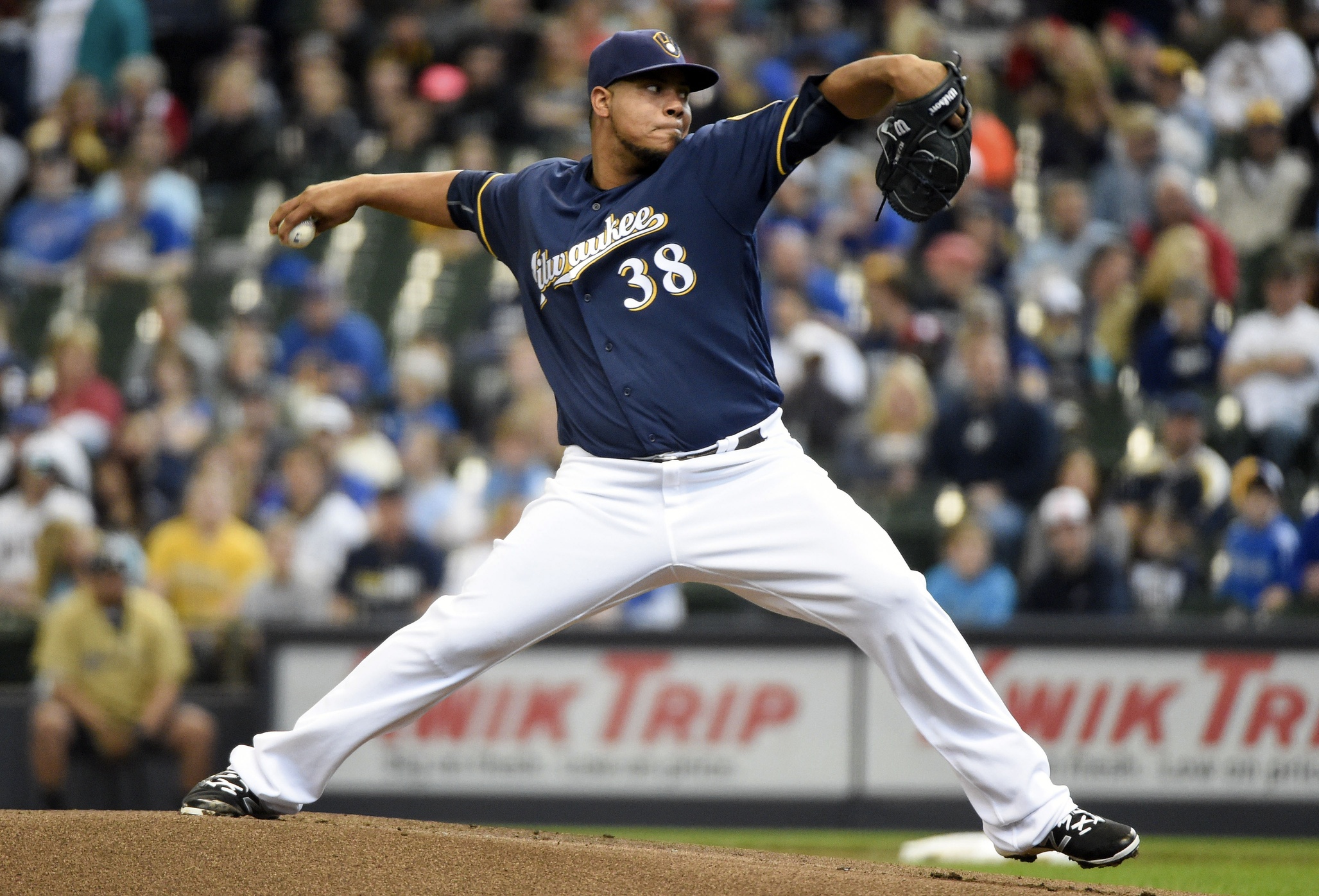Thanks to the ridiculous vagaries of pitching statistics, Wily Peralta’s outing Sunday against the Phillies will technically go into the books as a “quality start.” In reality, Peralta struggled again on sunday, as he was unable to hold down a Phillies lineup that has been absolutely brutal all year long — they entered Sunday’s game with a .249/.303/.382, and their .252 TAv ranked last in the National League. The Phillies touched up Peralta for seven hits and four runs over six innings, one of which was unearned because of an error by Peralta himself.
Still, this start was a step forward for Peralta, who went six innings for the first time all season. He allowed fewer than five runs for the second straight start and lowered his ERA to 7.40 in the processs. When your season starts as poorly as Peralta’s did, you take what you can get.
The most encouraging sign from Sunday’s outing against the Phillies was Peralta’s ability to get the slider over for strikes. Entering Sunday, Peralta had arguably the worst slider of any starter to feature it as a regular part of his arsenal. Of the 12 starting pitchers to throw at least 100 sliders entering Sunday, only Jordan Zimmermann and Yovani Gallardo induced fewer swings and misses than Peralta’s 31.2 percent. Zimmermann, however, has a 72 percent ground ball rate for his fastball compared to Peralta’s meager 40 percent. And at least Gallardo can throw his slider for strikes — Peralta’s slider had gone for a strike just 52.5 percent of the time entering Sunday compared to 64.1 percent for Gallardo. Finally, Peralta’s slider has been mashed when he does throw it for a strike — hitters are slugging .577 against it with a double and two home runs.
Against the Phillies, Peralta threw 20 sliders, 13 of which (65 percent) went for strikes, and five of which (25 percent) were of the swinging variety. Peralta was close enough to the zone to draw 11 swings (55 percent). For much of the season, hitters have been spitting on Peralta’s slider, with just a 44 percent swing rate for the season. Hitters are focusing on the fastball, and unless he can punish it with strikes from secondary pitches, he’s toast, as his first few starts proved.
The most obvious benefit to throwing strikes with the secondary pitches is cutting down on walks. Peralta walked 12 batters in his first four starts and didn’t issue a single walk Sunday against Philadelphia. But Peralta’s fastball was also more effective as a result; he drew four whiffs between his four-seamer and sinker and held the Phillies to just two extra-base hits out of the seven hits he allowed, a pair of doubles. After allowing four home runs in his first four starts, it was critical that he keep the ball in the yard against this Phillies lineup.
Peralta still has a mountain to climb. After a year and change of ineffectiveness, Brewers fans will not be swayed by the a quality start on a technicality against one of the league’s worst lineups. Peralta doesn’t just need to throw his slider for strikes, he needs it to be a legitimate put-away pitch, the kind that can snuff out innings like the sixth inning, in which the Phillies plated two runs with a pair of doubles coming with two outs in the frame.
But at least Peralta has something to build on now. Here is a blueprint: keep hitters off balance by throwing the slider for strikes, let the 95 MPH fastball do its work. HopefullySunday’s start, which came two weeks before Peralta’s 27th birthday, can be a springboard to more success.
